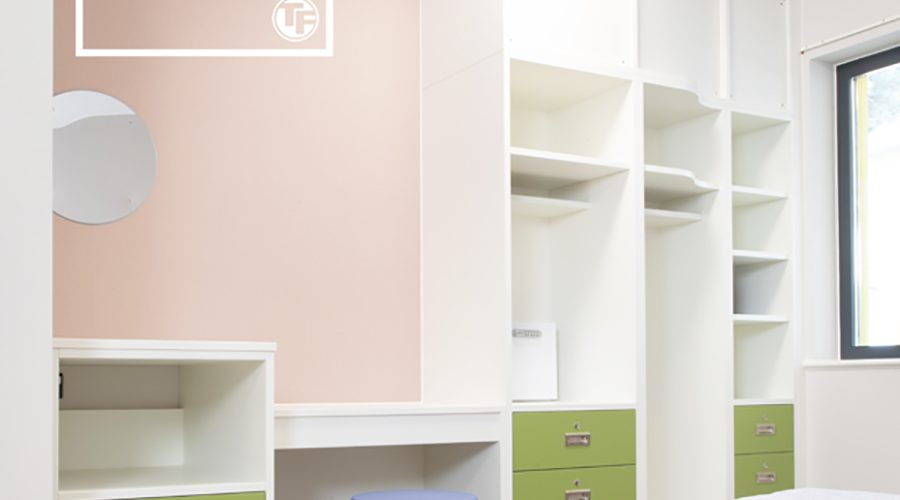One of the most important goals of all stakeholders in the provision of mental health care is the reduction or elimination of the risks associated with self-harm and suicidal behaviour.
Tough Furniture
When it comes to the provision of furniture, there are several key design features that can significantly reduce ligature risk, such as the use of minimal or invisible fixings, with non-standard screw and bolt heads where these are visible. Likewise, an emphasis on rounded edges and the use of sloping faces on items such as TV cabinets, can also make it much harder to tie off a ligature point. Obviously, the reduction or elimination of any obvious protruding features is vital – so inset hinges, inset or ‘cut out’ handles etc can all play a key role here.
As well as the reduction of obvious ligature points on the surface of furniture, the other key component of anti-ligature furniture design is robustness. It is very important that furniture for mental health care is built to the highest standards of resilience, using the best quality components available and maximising reinforcement throughout, so that the structural integrity of each furniture item is maintained, even in the face of aggressive or harmful behaviour. Once a furniture item has been damaged or degraded, it generates much more ligature risk, and it is for this reason that the use of specialist furniture such as that supplied by Tough Furniture Ltd is always preferable to the use of standard contract furniture in such environments.







